PAPER QUILLING
CHINESE STYLE 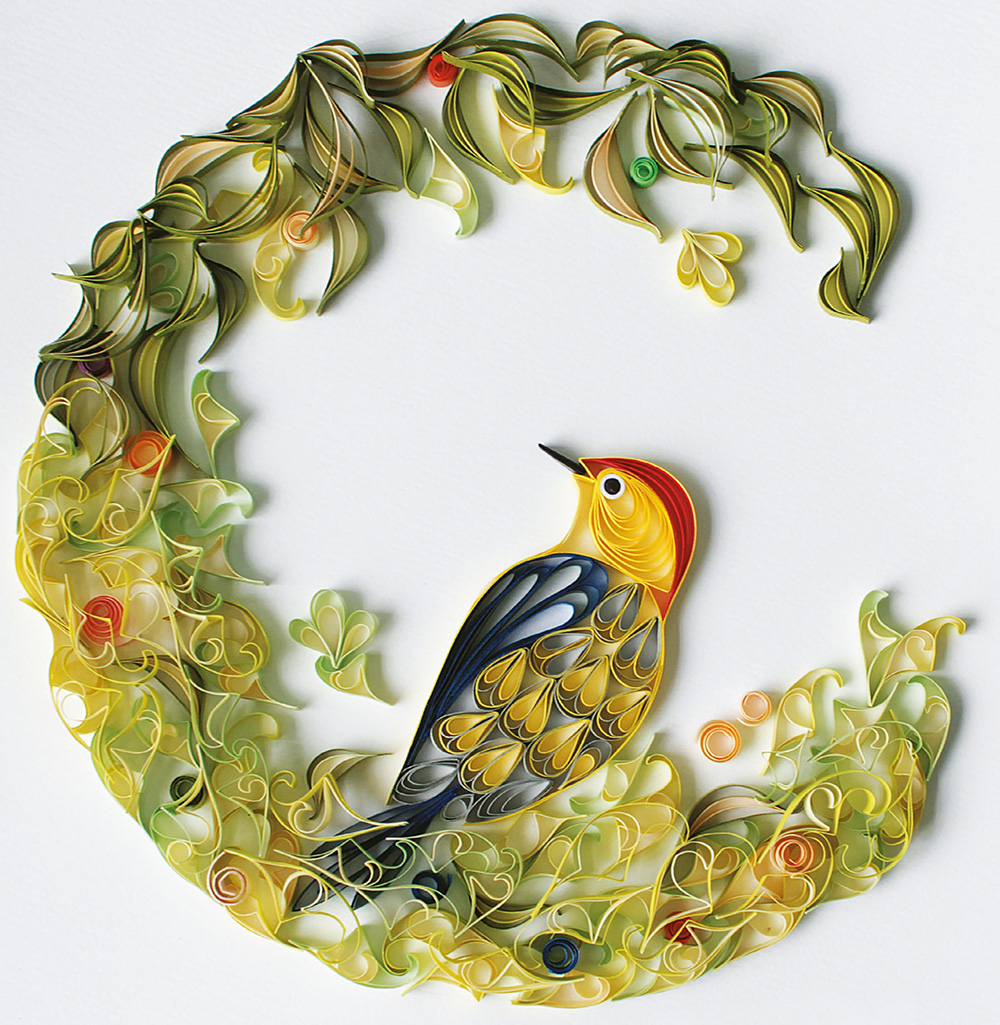 A Little Bird Engaged by the Flowers This artwork presents a colorful bird resting on a green wreath. The harmony of the colors and white space shows the traditional gongbi (meticulous brush craftsmanship) or realism style. PAPER QUILLING
A Little Bird Engaged by the Flowers This artwork presents a colorful bird resting on a green wreath. The harmony of the colors and white space shows the traditional gongbi (meticulous brush craftsmanship) or realism style. PAPER QUILLING
CHINESE STYLE Create unique paper quilling projects that bridge Western crafts and traditional Chinese arts Zhu Liqun Paper Arts Museum Better Link Press  The Watertown This artwork is an innovation of combining traditional Chinese woodblock printing and quilling. The artist first colored the white background using the woodblock printing technique, and then finished it with coils and their variations. Whether it looks like duckweeds on the pond or leaves in the woods is depended on your imagination. The art style is similar to Monets impressionism and has become a new Chinese quilling direction.
The Watertown This artwork is an innovation of combining traditional Chinese woodblock printing and quilling. The artist first colored the white background using the woodblock printing technique, and then finished it with coils and their variations. Whether it looks like duckweeds on the pond or leaves in the woods is depended on your imagination. The art style is similar to Monets impressionism and has become a new Chinese quilling direction.
Copyright 2015 Shanghai Press and Publishing Development Company, Ltd. All rights reserved. Unauthorized reproduction, in any manner, is prohibited. This book is edited and designed by the Editorial Committee of Cultural China series For Zhu Liqun Paper Arts Museum Project Designers: Zhu Liqun, Yao Xiaoyan Text and Photographs: Wang Chenbo Quilling Demonstration: Liu Xiuxia, Qian Caidi Works: Zhu Liqun, Yao Xiaoyan, Liu Xiuxia, Wang Chenbo, Qian Ciying, Yan Wenjun, Zhu Jiayan, Qian Caidi, Dong Xiaoyan, Yu Ruizhen, Li Liwen, Wang Yumeng, Chen Xinyi, Zhang Keqing, Zhang Danyi, Zhao Yi, Hu Weiyuan, Yang Ningyuan, Chen Sizhe, Zhang Yiqiu, Ji Yunting, Zhou Xiaoyi, Xia Xiaocen Translation: Kitty Lau Cover Design: Wang Wei Interior Design: Li Jing, Hu Bin (Yuan Yinchang Design Studio) Editors: Yang Xiaohe, Wu Yuezhou Editorial Director: Zhang Yicong Senior Consultants: Sun Yong, Wu Ying, Yang Xinci Managing Director and Publisher: Wang Youbu ISBN: 978-1-60220-044-9 Address any comments about Paper Quilling: Chinese Style to: Better Link Press 99 Park Ave New York, NY 10016 USA or Shanghai Press and Publishing Development Company, Ltd. F 7 Donghu Road, Shanghai, China (200031) Email: Printed in China by Shenzhen Donnelley Printing Co., Ltd. 5 7 9 10 8 6 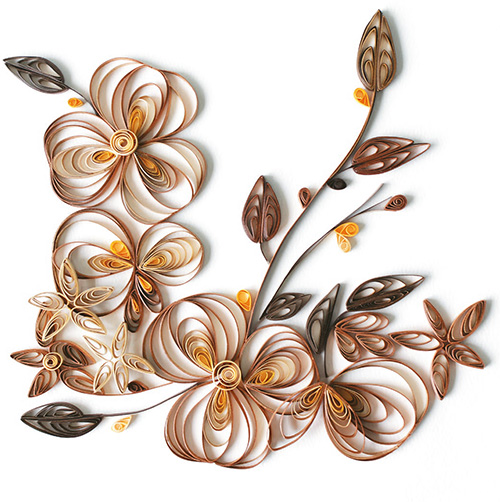 The Flowers This artwork is mainly composed by brown color strips, simple but not dull.
The Flowers This artwork is mainly composed by brown color strips, simple but not dull.
Leaves, buds, and flowers reflect upon each other to deliver the scene of fall. PREFACE Learning Quilling Is Like a Child Learning How to Speak Q uilling is very interesting. It is an art using multicolor paper strips with different tightness of shapes to form the basic components. Then creatively assemble all these components to produce a vivid art form or an exquisite work. Quilling is very popular nowadays. To learning quilling, there are two methods or attitudes.
One is to simply copy from the instructors or relative books, seriously follow the instructions, step by step, to produce a similar form to the samples. This is fun but not to the full extent, more like copying someones speech but not able to express your own ideas. The other method or attitude is to quickly learn and master all the basic techniques, and then try to modify to create your own designs. Learning the basic techniques is similar to learning the basic words when a child first learns how to speak. He has to go through the process of imitating. In order to fully express his idea, he cannot simply repeat the basics.
He has to develop the skills of elaborating with what he has learned. This is the nature of learning sciences. In 2010, my team and I called more than three thousand people into an activity in Shanghai, China. We used the quilling technique to create more than ten thousand colorful fishes. Fish is commonly known as a symbol of peace and wealth in Chinese culture. It is one of the most pleasing dishes in Chinese New Year.
People usually keep half of the fish for the sake of luck because the remainder of fish sounds like surplus and wealth in Chinese. During the two years of preparation, there was a message that we gave to the participants: Learning the basic techniques of quilling is not difficult. They are all about scrolling or curling the paper stripes into different tightness and sizes. You can shape them into different components. But what you need is a valiant attempt to create the elements that you like. Among the three thousand participants, most of them were seniors and teenagers.
They were like children learning how to speak and created a lot of components. Then they assembled them into different compositions and designed their own lucky colorful fishes. These charming artistic fishes led us to a very sensational quilling exhibition. This was only the beginning. More and more outstanding artworks were born since then.  Carp Carps are one of the most popular auspicious symbols.
Carp Carps are one of the most popular auspicious symbols.
The leaping of the carp generates the waves that are outlined in mint cyan, producing a lot of movement. 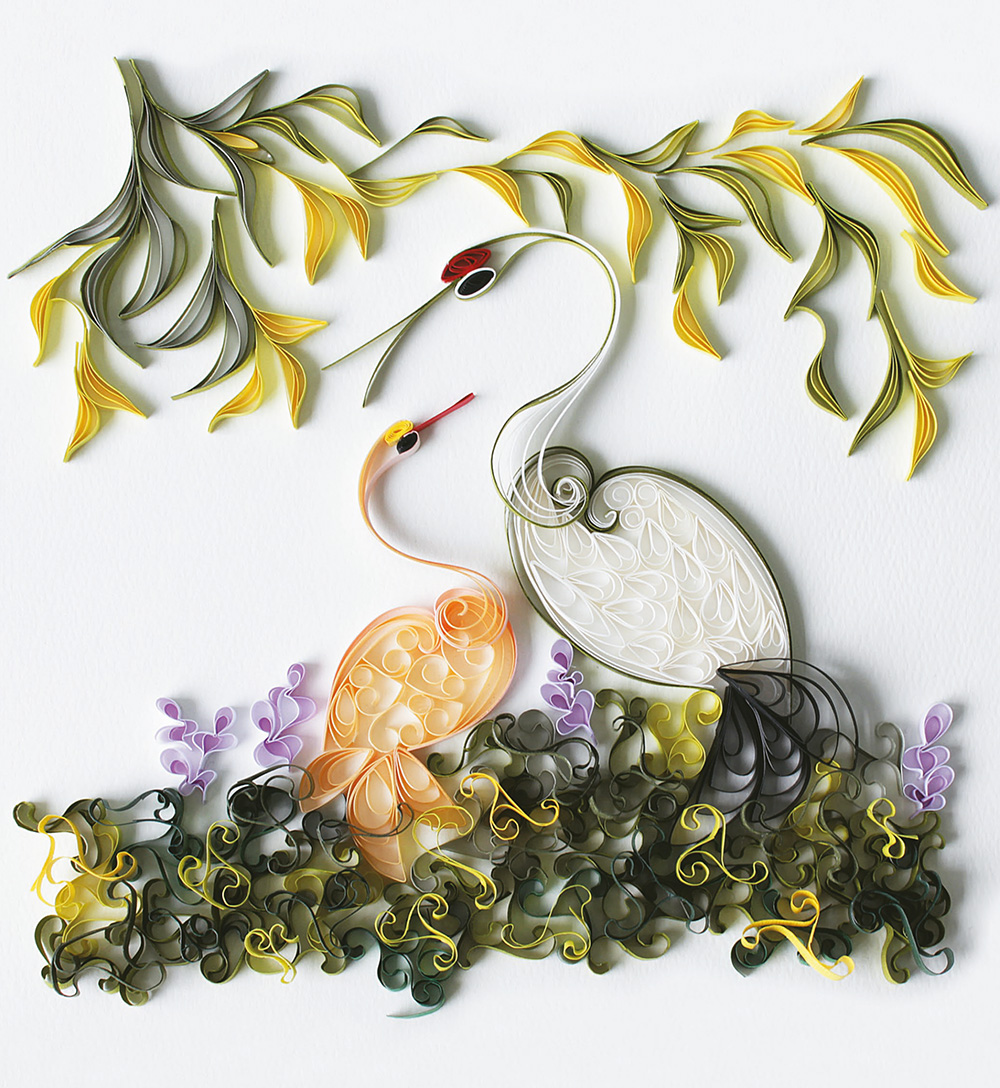 Nurturing A mother crane is nurturing her clamoring baby on the grass under a tree. They share their life together, creating a very warm scene.
Nurturing A mother crane is nurturing her clamoring baby on the grass under a tree. They share their life together, creating a very warm scene. 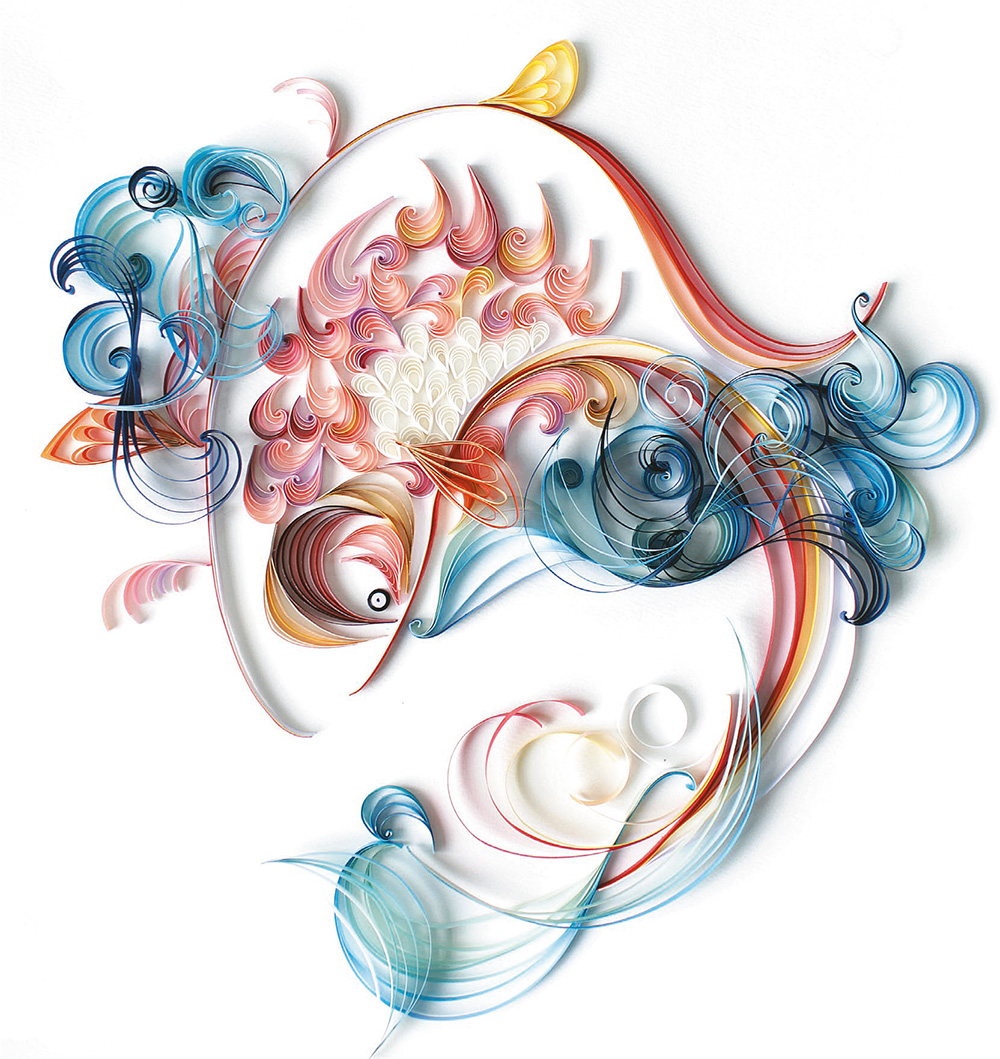 Carp Leaping Over the Dragon Gate This is a Chinese idiom meaning the rapid advances in career as a symbol of success. When carps leap over the Dragon Gate (at Yumenkou, Hejin City, Shanxi Province), they transform into dragons as told by the legend. The abstract style with the pastel colors presents a free and fresh scene.
Carp Leaping Over the Dragon Gate This is a Chinese idiom meaning the rapid advances in career as a symbol of success. When carps leap over the Dragon Gate (at Yumenkou, Hejin City, Shanxi Province), they transform into dragons as told by the legend. The abstract style with the pastel colors presents a free and fresh scene.
You can also create your own unique artworks if you are willing to try. The Chinese auspicious culture has a very long history and provides plenty of ideas. Chapter 1 of this book introduces how quilling and Chinese culture influenced and integrated with each other. Chapter 2 recommends the basic materials and tools. After reviewing the basic techniques in Chapter 2, you should have learned all the fundamental elements, such as line and scroll, loop, coil, and crescent shapes. Chapters 3 and 4 present a lot of artworks with composition techniques that drives you to create a more complicated design.
The secret of success is: learning the techniques is not difficult but the greatest fun is from applications and transformations. We shall learn from children since limited vocabularies and grammatical errors do not hinder them from learning how to speak. Their simple language skill gives us fun moments. Therefore, please learn like a child, be bold and flexible, learn the basic techniques, and create your own quilling pieces as soon as possible. Zhu Liqun INTRODUCTION The Beginning and Development of Quilling Q uilling, also known as paper-scrolling, is a form of paper art. It is to use multicolor paper strips as the basic materials with the techniques of scrolling, shaping, and pasting to produce various components.
Then group and assemble them together to create an art piece. The simple techniques and beautiful presentations have gained the popularity of quilling. Quilling is an art with a very long history that can be traced back to Ancient Egyptian times. It was further developed in the medieval Italy and France. In the 15th century around the Mediterranean region, the poor nuns used the strips of paper trimmed from the gilded edges of the Bibles and missals, rolling with quill pens to form scrolls. Those scrolls were assembled in different forms to decorate paintings and reliquaries in the convents.
Next page
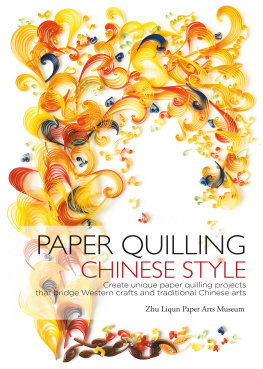
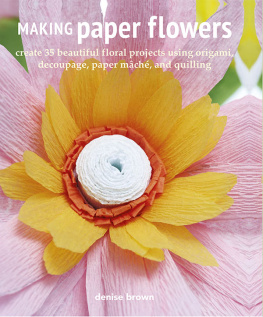


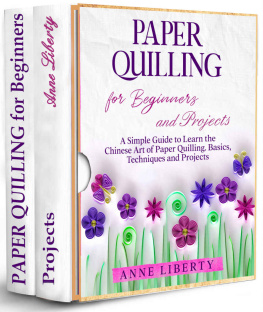


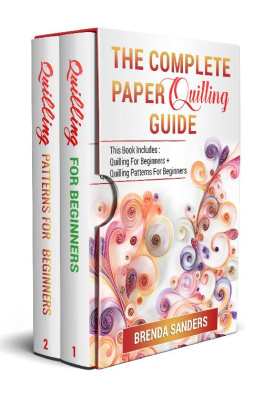
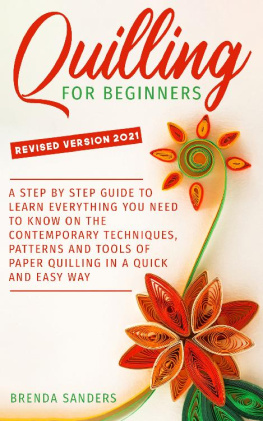
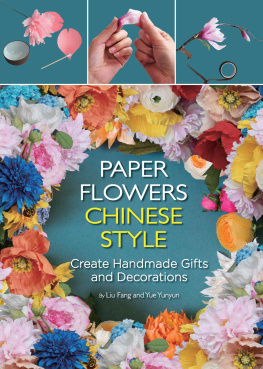
 A Little Bird Engaged by the Flowers This artwork presents a colorful bird resting on a green wreath. The harmony of the colors and white space shows the traditional gongbi (meticulous brush craftsmanship) or realism style. PAPER QUILLING
A Little Bird Engaged by the Flowers This artwork presents a colorful bird resting on a green wreath. The harmony of the colors and white space shows the traditional gongbi (meticulous brush craftsmanship) or realism style. PAPER QUILLING The Watertown This artwork is an innovation of combining traditional Chinese woodblock printing and quilling. The artist first colored the white background using the woodblock printing technique, and then finished it with coils and their variations. Whether it looks like duckweeds on the pond or leaves in the woods is depended on your imagination. The art style is similar to Monets impressionism and has become a new Chinese quilling direction.
The Watertown This artwork is an innovation of combining traditional Chinese woodblock printing and quilling. The artist first colored the white background using the woodblock printing technique, and then finished it with coils and their variations. Whether it looks like duckweeds on the pond or leaves in the woods is depended on your imagination. The art style is similar to Monets impressionism and has become a new Chinese quilling direction. The Flowers This artwork is mainly composed by brown color strips, simple but not dull.
The Flowers This artwork is mainly composed by brown color strips, simple but not dull. Carp Carps are one of the most popular auspicious symbols.
Carp Carps are one of the most popular auspicious symbols. Nurturing A mother crane is nurturing her clamoring baby on the grass under a tree. They share their life together, creating a very warm scene.
Nurturing A mother crane is nurturing her clamoring baby on the grass under a tree. They share their life together, creating a very warm scene.  Carp Leaping Over the Dragon Gate This is a Chinese idiom meaning the rapid advances in career as a symbol of success. When carps leap over the Dragon Gate (at Yumenkou, Hejin City, Shanxi Province), they transform into dragons as told by the legend. The abstract style with the pastel colors presents a free and fresh scene.
Carp Leaping Over the Dragon Gate This is a Chinese idiom meaning the rapid advances in career as a symbol of success. When carps leap over the Dragon Gate (at Yumenkou, Hejin City, Shanxi Province), they transform into dragons as told by the legend. The abstract style with the pastel colors presents a free and fresh scene.